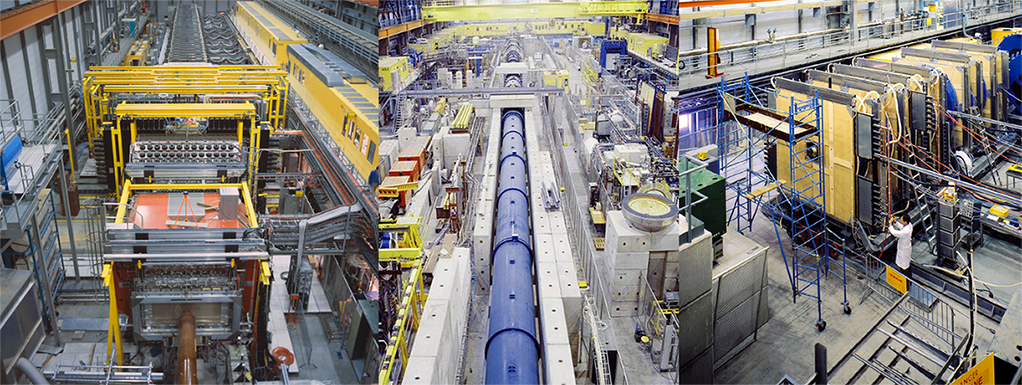During Herwig Schopper’s acclaimed period as CERN Director General, two North Area experiments made three seminal discoveries, of which two of them still leave physicists puzzled.

During the 1980s and with Herwig Schopper leading the Laboratory into the LEP era, CERN’s North Area witnessed groundbreaking physics experiments, such as the ones carried out by the European Muon Collaboration (EMC) and the NA31 collaboration. Their significant discoveries have a long-lasting impact in the field of particle physics until today and include the EMC effect, the proton spin crisis, and the first evidence of direct CP violation.
What began in the late 1970s as experiment by EMC to measure nucleon-structure functions in high-energy muon scattering directed towards confirmation of the quark picture and thus quantum chromodynamics, led to nothing else than the shattering of the simplistic understanding of the proton and the neutron, which remains commonplace in textbooks even to this day.
Structure functions describe the momentum distributions of the quarks that make up the nucleons. To understand their structure, the experimentalists scattered the M2 muon beam off a fixed target, enabling them to determine the quark distributions inside the nucleon. In 1983, they found to their surprise that the momentum distribution of quarks differed when the nucleon was part of an atomic nucleus or a free nucleon, known as the EMC effect. Originally, models predicted that the nuclear environment would not significantly affect the internal structure of nucleons. While some explanations exist, its origin remains unknown.
With a similar setup, the BCDMS collaboration used at the NA4 experiment the same technique to scatter muons to determine the quark distributions. This scattering process at SPS energies is mediated via the exchange of either photons or Z-bosons. The BCDMS collaboration measured this effect and discovered an interference effect between a photon and a Z boson.
EMC made their second groundbreaking discovery a few years later: Equipped with one of the first polarised targets and employing the polarised M2 muon beam, the collaboration sought to measure the proton spin by measuring the quark-spin contributions. Assuming the protons being made of three quarks with spin ½ each, the naïve expectation was that the spins of two quarks cancel each other out and the proton acquires the spin of the third quark, yielding a total spin of ½. However, the collaboration realized that only a small percentage of the proton’s spin comes from its constituent quarks in the case of a high-momentum transfer and published their findings in 1988. This dramatic result became known as the proton spin crisis, which is investigated until today.
In the same year, the first evidence for direct CP violation in kaon decays was found by the NA31 experiment. Direct CP violation occurs when the decay products have different symmetry properties as the original particle, which is the case for the kaon decay into two pions. Understanding the origin of direct CP violation can be helpful to understand the origin of our universe. The collaboration used secondary and tertiary kaon beams generated from the 450 GeV SPS proton beam to measure a double ratio of decay rates of long-lived neutral kaons K0L and their short-lived counterparts K0S into two neutral and two charged pions. Since the decay lengths for K0L and K0S differ significantly, the team mounted the target on a train called XTGV, which served predefined stations inside the vacuum tube, reducing the dependence on Monte Carlo simulations. Not only the target moved, but also the 5-metre-long steering and sweeping magnets around the target. About a decade later, NA48, the successor of the NA31 experiment located in the ECN3 hall in CERN’s North Area, observed the direct CP violation.
EMC’s successor, the New Muon Collaboration, contributed to the realm of discoveries in 1991. By scrutinizing data collected between 1986 and 1989, they revealed an unequal distribution of anti-d and anti-u quarks in the nucleon, thus adding to the quests QCD has on offer.
Other experiments, such as NA34, that began taking data in the EHN1 and ECN3 experimental halls during the 1980s also laid the foundation for CERN’s ultra-relativistic heavy ion programme to study nuclear matter under extreme conditions and to find the at that time assumed quark-gluon plasma, the state in which quarks and gluons are free particles.
The 1980s were the beginning of the burgeoning era of the North Area’s diverse physics programme, which is anticipated to endure for decades to come.
